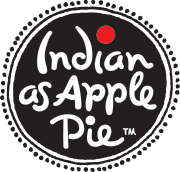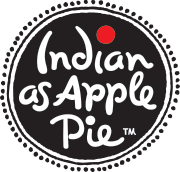November 05, 2024


IS IT PARANTHA OR PARATHA? Growing up with a Punjabi twang on my tongue, I've always said the word for Indian stuffed flatbread with a severely rolled 'r' followed by an 'n'. So when it came time to write the word in a recipe and in my books, I did what I always tend to do when struggling with an Indian food question. I asked my extended family on our extensive 'Whatsapp' group. The answer was unanimous. Keep the 'n'. What a relief to know that I wasn't completely off base. Know that our stuffed Indian flatbread is also known as 'paratha' without the 'n'. No matter how you pronounce it - no matter how you write it - just be sure to make it. These stuffed flatbreads are a bit of a process, but once you get the hang of it, you'll wonder where they were all your life. While I know a parantha can be beautifully gourmet - for me, it always symbolizes leftovers. It's what I craved whenever we would visit my babaji & dadi (grandparents) in Bhikhi, our village in the heart of Punjab, about a five-hour mixed mostly highway and some dirt-road drive southwest of Chandigarh past Patiala. It's where my father grew up and where I spent my life visiting, eating, and learning how to cook.
We slept in the inner room with the wooden door, low archway, and resident mouse (more on that later) that led right into the kitchen, purposely constructed of stone to remain the coolest spot in the sprawling haweli. It's where all the clanking came from in the morning just after the 4 a.m. call to prayers from the dueling mosque and gurdwara surrounding our mostly Hindu village. As Chota prepared the morning chai, we bratty kids whined and begged for paranthas. As soon as dadi was settled on her manji with a cup of steaming tea and buttery toast, we got our wish. It was typically any dough left over from making roti the night before and leftover dry sabzi. Most mornings we'd have cooked Aloo Gobi that was mashed and added to our dough ball, expertly rolled out, and then cooked on the tava with ghee. The only time we would get specific paranthas with spiced potato or grated daikon fillings would be a pre-designated day. What a treat and what preparation! The stack of stuffed paranthas would be served with salted yellow butter as well as white butter made from water buffalo milk, spicy achaar, and a bowl of yogurt with large, perfectly square granules of sugar sprinkled on top. It's the only time I considered eating sugary yogurt - with a spicy parantha. To this day, it's one of my favorite food combinations, with the taste forever locked in my mind and on my tongue.
The recipe I share below is my best Punjabi combination for a spiced potato filling. The process took a few tries. I started by cooking the potatoes and then mashing them by hand and then a fork for the larger chunks. It still left chunks that broke through the rolled dough - which is fine, but I wanted something a touch smoother. The most efficient method was by grating the cooked potato against the large holes of a box grater - you'll get even better results if the potato is still warm. I also experimented with different fillings. First, with this one from my samosas. It was just okay - but, that's never good enough for me. And, then with a chunkier potato filling with more chaat masala. Again, it was just okay. Of course, I then had to call my sis-in-law Alka in Delhi. I'm sure my calls are exhausting to her by now. For the life of me, I could not place the taste that I know goes perfectly in these paranthas and it certainly was not in the recipes I researched - my biggest issue with Indian recipes out there - they don't seem to lock in the flavors that are stuck in my brain. As soon as she said it - it made sense - ground Anardana or dried pomegranate seeds. (Anar is the word for pomegranate and dana is seed). Used in our chana masala, they add tartness. It is important to grind them well so that you don't bite into the hard seeds, though a larger piece here or there is perfectly fine and delicious. I also added dried fenugreek leaves, which are a must in our Punjabi household. Remember, because the potato is bland, the filling has to be a touch saltier and more flavorful. The best compliment was from my younger daughter home from college over the Diwali weekend, 'Mom, these are so good. I really don't know why you don't make them more often.' Um, mic drop. xoxo Anupy.

Roti/Chapati Dough
3 cups chapati flour
1 1/2 cups water
1. Place both ingredients in a deep bowl and knead by hand or place in a stand mixer and process until it comes together like pizza dough. Chapati flour is a stone-milled whole wheat flour found in Indian grocers. If you don't have access to it, use soft white whole wheat flour (sold in most grocers for baking) or blend 2 parts whole wheat flour with 1 part all purpose flour. The variety of wheat used to make chapati flour is different than the darker, slightly more bitter whole wheat flour found in mainstream grocers. Why the flour does matter and why if you want light, delicious dough you want to combine traditional American whole wheat flour with all purpose. Know to also tweak the amount of water as you mix. If the dough seems dry, add a touch more. If you add too much balance with a bit more dry flour. The key is that it should look like pizza dough.
2. Place the dough ball in a bowl and cover with a damp cloth for about 15 minutes. This will soften it a bit while you make the filling. I have had great results by using a glass bowl - it seems to stay much softer. You can put this in the fridge to pull out when you are ready to use it. Just be sure to bring it to room temperature.
Note: Some recipes call for adding 1 teaspoon of salt and 1 tablespoon of ghee. I never do, but instead add a little extra salt and spice to the filling. Feel free to experiment. The ghee is to keep the dough soft, but I never felt the need nor did my family ever do this. Again, you can give it a try if you like.

Spiced Aloo Filling
4 russet potatoes, boiled, peeled, and grated
1 small or medium yellow or red onion, finely minced
1 - 4 Thai or serrano chiles, stems removed and minced
2 tablespoons kasoori methi (dried fenugreek leaves), lightly hand crushed
1 tablespoon minced ginger
1 tablespoon coriander powder
1 tablespoon garam masala
2 teaspoons cumin powder
2 teaspoons red chile powder or cayenne
2 teaspoons amchur powder (dried mango powder)
2 teaspoons ajwain (carom seeds)
2 teaspoons finely ground anardana (dried pomegranate seeds)
2 teaspoons salt
1. Grate the cooked potatoes over the large holes of a box grater. I use an oversized stainless steel thali so that I can better mix in all the spices after grating the potato. Break down any large pieces of potato with the back of a fork.
2. Add the remaining ingredients and stir until everything comes together. I use my hands - wear kitchen gloves if you don't want to touch the chiles.
3. Set aside until you are ready to fill the dough.

Fill-Roll-Cook
1. Lightly cover a clean surface with dry flour. Take a ball of dough and roll it until smooth in your hands. The larger the dough ball, the larger the parantha.
2. Once round, flatten it a bit with your hands and then with a rolling pin roll it out until it's just big enough to hold the filling, about three inches in diameter.
3. Add a large dollop of the cooled filling in the center. If the filling it too hot it will soften the dough too much. You should use more than you think because if there's not enough filling then the paranthas will turn out bland. I use about 1/4 cup. I then pull all the sides together as if making a large dumpling and pinch any openings closed. I flatten it slightly with my hands, dip it on both sides in the dried flour, and then roll it out. It helps to place the pinched side face down on your surface so the pressure of the rolling pin better keeps the filling inside the dough.
4. Roll it out as thin as possible. The filling may peek out in some areas and that's okay. Some make these very thick - like my mother-in-law, but I prefer my paranthas thin. Use a little dry flour to avoid sticking, but note that too much flour will dry out your parantha. Try to keep it at a minimum and before cooking, pass the uncooked parantha from one hand to another to brush off as much dry flour as possible ahead of cooking.
5. Heat up a skillet or tava over medium-high heat. The heat is key. If too hot, it will simply sear your bread from the outside and not cook the dough through on the inside. Place the parantha on the dry skillet (no oil or water).
6. Heat for only 30-40 seconds and immediately flip it. This is a little trick my aunts taught me. Never cook the one side through immediately. This will lead to softer paranthas and works for roti as well. Then, cook the other side until slightly brown and almost cooked through. Flip again and apply a small amount of ghee or oil on both sides and cook until browned on both sides. Be careful not to overcook them. There's no real method of cooking and flipping, but that first flip I find is critical to a really soft parantha. I would also avoid overcooking your parantha or it will get hard on the outside. We want them soft on the outside, but of course the dough should cook through. The filling is already cooked so that's not the issue, though the spices do better when heated through.
7. Line a baking tray with a wire rack and lay the paranthas out to cool. This is also important because the condensation that collects as they cool can make them soggy if you simply stack them while hot. It's fine to stack if you are going to eat them immediately. Once they are cool, you can stack them and store them. To store, wrap in a paper towel or cloth napkin first and then in aluminum foil so that they don't dry out. They can last for weeks in the fridge. With the addition of the onion, they may not last quite as long, but trust me you won't have an issue.They will be gobbled up.


Watch me make the dough in my stand mixer. Remember, you can do this by hand in a bowl with no equipment at all or even in your food processor. I prefer to do it this way so I don't have massively dirty hands afterwards. Though, if I have the time I really love the process of kneading dough by hand. Never miss a video again by subscribing to my YouTube channel. I'm not looking to make perfect videos - simply perfect the art of learning and teaching! xoxo Anupy.
Comments will be approved before showing up.

